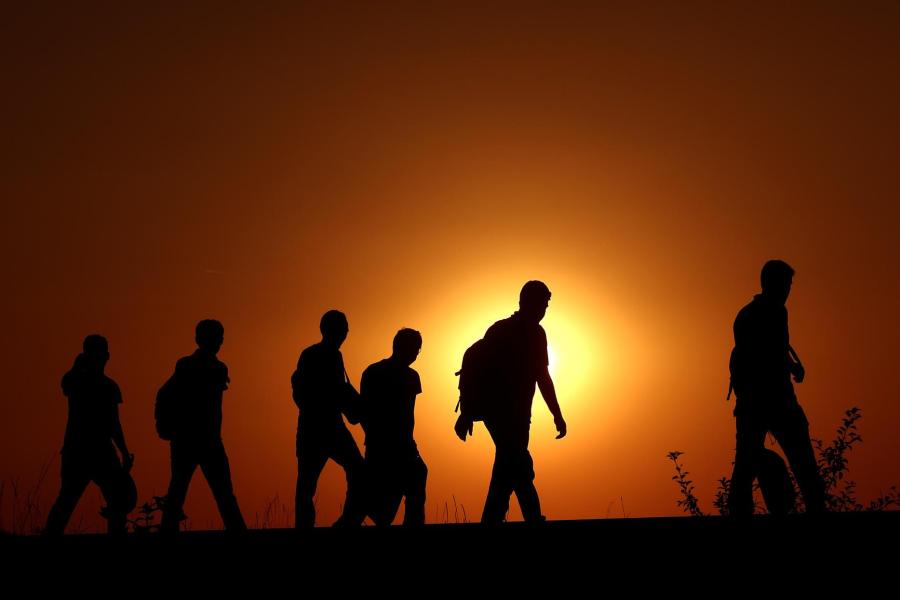ISIS: Ambitions and Constrains
By Fadi Elhusseini
Since its inception, news of Islamic State in Iraq and Syria (ISIS) has splashed across global newspapers. The nascent entity emerged suddenly and quickly expanded. Its brutality has commanded widespread attention and generated mounting concern. A few months ago, ISIS entered its second year, demonstrating a unique ability to survive despite being targeted by joint international efforts and military campaigns. This article digs deep inside the life of ISIS, assesses important details such as its structure and formations and highlights facts that may be important to the reader and the decision-maker alike. These features would reveal the complexity of the composition of ISIS which managed to build in record time.
Islamic movements have a deeprooted history in the Middle East. They took on a mature political form with the emergence of the Muslim Brotherhood in 1928, five years after the collapse of the Ottoman caliphate. The failure of the Brotherhood to master challenges and to fulfil the aspirations of its supporters led to the emergence of numerous other movements with an Islamic orientation. This trend escalated with the US occupation of Iraq in 2003, resulting in the birth of the Jama’at al-Tawhidwal-Jihad (JTJ).
In 2004, led by Abu Musab al-Zarqawi, JTJ swore allegiance to the al-Qaeda network – becoming Al-Qaeda in Iraq (AQI). Following al-Zarqawi’s death in 2006, AQI became the Islamic State in Iraq – the forerunner of ISIS. History aside, ISIS (an acronym for“Islamic State”) or DAESH (an abbreviation of the group’s name in Arabic, ad-Dawla al-Islamiyyafil-Iraq wa-Sham )has become one of the most influential and controversial forces to penetrate the Middle East. Dramatic victories and the control of Mosul in summer 2014 were stepping stones that ushered in and solidified ISIS’ rule, hence its declaration of a caliphate.
Within less than two years, ISIS managed to survive in spite of the participation of some 60 nations in the U.S.-led coalition against it, the recent attacks by the Russian troops, the fierce battles against the Syrian regime and the Iraqi army, the clashes with the Sunni tribes in Iraq, and forces the popular crowd ‘al-Hashd al-Shabi’, the Kurdish Iraqi fighters ‘Peshmerga’, al-Nusra, Hezbollah, the Iranian Revolutionary Guard fighters and other mercenaries. Intriguingly, the group has succeeded not only in survival, but also in morphing from a non-state actor into a quasi-state.
At this point, ISIS controls more than half of Syria and one third of Iraq. Its territory consists of a decentralised system of 16 provinces, each one further divided into districts. Every province is controlled by an emir (a governor), who manages the emirs of his districts. These district emirs, in turn, micromanage their populations and maintain control of oil fields.
According to The New York Times, ISIS has outpaced the Syrian and Iraqi regimes in administrating the cities it controls. After years of civil war, chaos and instability, things are now in order; streets are cleaner, businesses are more organized and, if you follow their dictates, you can live in safety.
The same conclusion was reached by other western sources who emphasise that ISIS runs life in the cities it controls as any other state would: issuing identity cards, driving licenses and work permits. It develops infrastructure and fights corruption.
The ISIS caliphate has a Shura Council (a parliament), but its role remains consultative. The final word rests with the so-called caliph Abu Bakr al-Baghdadi. The caliphate has also developed several departments including media, justice and security as well as its own education system (based on an austere interpretation of Islam).
The security apparatus is run different to other departments, as it is only for those loyal completely to the group and not open to new recruits whose loyalty has not been tested. According to US security sources, the number of ISIS fighters ranged between 9,000 to 18,000 before the US- led campaign, and the same sources suggested that the number of the fighters is now the same!!!
The CIA said a year ago that the number of ISIS terrorists ranges between 20000 and 31500, while the head of the Syrian Observatory for Human Rights thinks that the number in Syria alone exceeds 50,000. On his part, the chief of the Russian General Staff estimates the number of ISIS fighters 70,000 and those numbers remain modest when compared with the Kurdish estimations which suggest that the number reached 200,000.
Numbers aside, ISIS has employed tactics so brutal that even al-Qaeda has denounced them. Their methods involve the destruction of property, torture and execution in the crudest fashion, all intended to terrorize and intimidate their enemies. Indeed, according to the witnesses, the battle of Basra would not have ended swiftly without the horror that struck the Iraqi garrison after being subjected to a number of suicide attacks.
With regard to foreign operations which include terrorist attacks or bombings in Western or Arab countries, ISIS utilizes these acts as propaganda and as one of its accomplishments so that to attract new recruits who sympathize with its ideology and this us to the second administrative body which ISIS pays a lot of attention to: media.
ISIS has demonstrated a powerful capacity to attract the support of ideological and real-world fighters (from more than 80 countries) and to cultivate terrorist cells around the world. Experts have highlighted ISIS’ propaganda machine as the key to its recruitment success. With as many as 90,000 Twitter accounts globally, ISIS’ virtual online army has proven adept at the use of technology – especially social media platforms. The recent, flagrant call for Sudanese youth to join the group is a salient example of ISIS’ ability to run a sophisticated propaganda campaign.
ISIS’ swift occupation of a large swathe of Iraq and Syria and its ability to stretch its tentacles in ten countries through “either ISIS or affiliated groups” – Nigeria, Algeria, Libya, Egypt, Saudi Arabia, Iraq, Syria, Yemen, Pakistan and Afghanistan – highlights the group’s ambition and its capacity to control and manage large territories.
According to security experts, ISIS’ strategy is based on survival followed by expansion. After the initial survival phase, ISIS began to create provinces and districts. The group then started to expand its sphere of influence into other regions. In his book Empire of Fear: Inside the
Islamic State, Andrew Hosken uncovers a five-year plan designed by IS. Hosken outlines ISIS’ map of a new world order that includes Spain, Greece, the rest of the Balkans, India and the top half of Africa in a greater, ultra-strict caliphate or Islamic State.
Almost two years now, ISIS is continuing its campaign while regional and global powers lack a common vision on how to respond. Although the international community certainly dreads the prospect of any further ISIS expansion, it is distracted by other matters and continues to misjudge the menace posed by that ‘distant’ region. In the same way, the undergoing proxy war in Syria is hindering any consensus on how to fights ISIS and regional powers are busy with their domestic and regional conflicts; e.g. Huthis in Yemen and PKK in Turkey.
A lot of speculations outweighed a foreign role in the creation and success of ISIS, especially with the unprecedented accomplishments ISIS attained in no time, yet perhaps the truth is a mixture between the two: the regional instability and chaos inspired a foreign decision to create ISIS so that to achieve specific goals.
In spite of the aforementioned gloomy givens, I think that the circumstances that contributed to the emergence and continuation of ISIS will not last long. Thus, this group is doomed to failure and demise noting that the real success it made was unifying all the people across the globe against terrorism.



